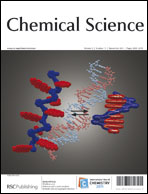Treatment of terminal phosphide anion [PNb(N[Np]Ar)3]− ([Na(OEt2)]+ salt, Ar = 3,5-Me2C6H3) with two diphenylketene equivalents led to isolation of anion [P(C{CPh2}O)2Nb(N[Np]Ar)3]− in 78% yield as its [Na(THF)]+ salt. The latter reacts with diphenylketene (1 equiv) to provide the triple diphenylketene addition product [P(C{CPh2}O)3Nb(N[Np]Ar)3]− in 88% yield as its [Na(THF)]+ salt; the same material is obtained alternatively in 93% yield by reaction of diphenylketene (3 equiv) directly with niobium phosphide [Na(OEt2)][PNb(N[Np]Ar)3]. The anion [P(C{CPh2}O)3Nb(N[Np]Ar)3]− was also crystallized as its ion-separated [Na(THF)6]+ salt as illuminated by a single-crystal X-ray diffraction study, which also revealed the three-fold symmetric nature of the highly hindered tertiary phosphine comprising the anionic component. Coinage metal monocations of the new, anionic phosphine were prepared via salt elimination; structural studies on the zwitterionic complexes (py)M[P(C{CPh2}O)3Nb(N[Np]Ar)3] (M = Cu, Ag, and Au) showed them to be isostructural in the space groupP21/c while illustrating the ensconcement of a two-coordinate coinage metal in a deep binding pocket flanked by three phenyl residues. Rhodium(I) incorporation into the anion's binding pocket illustrated versatility of the latter: in contrast to structural observations for the M(I) complexes (M = Cu, Ag, and Au), in the case of Rh[P(C{CPh2}O)3Nb(N[Np]Ar)3] an X-ray study reveals strong interactions (η6 and η2, respectively) with two of the three phenyl residues that are proximal to Rh(I) when connected to the phosphine lone pair of the anion.

You have access to this article
 Please wait while we load your content...
Something went wrong. Try again?
Please wait while we load your content...
Something went wrong. Try again?


 Please wait while we load your content...
Please wait while we load your content...